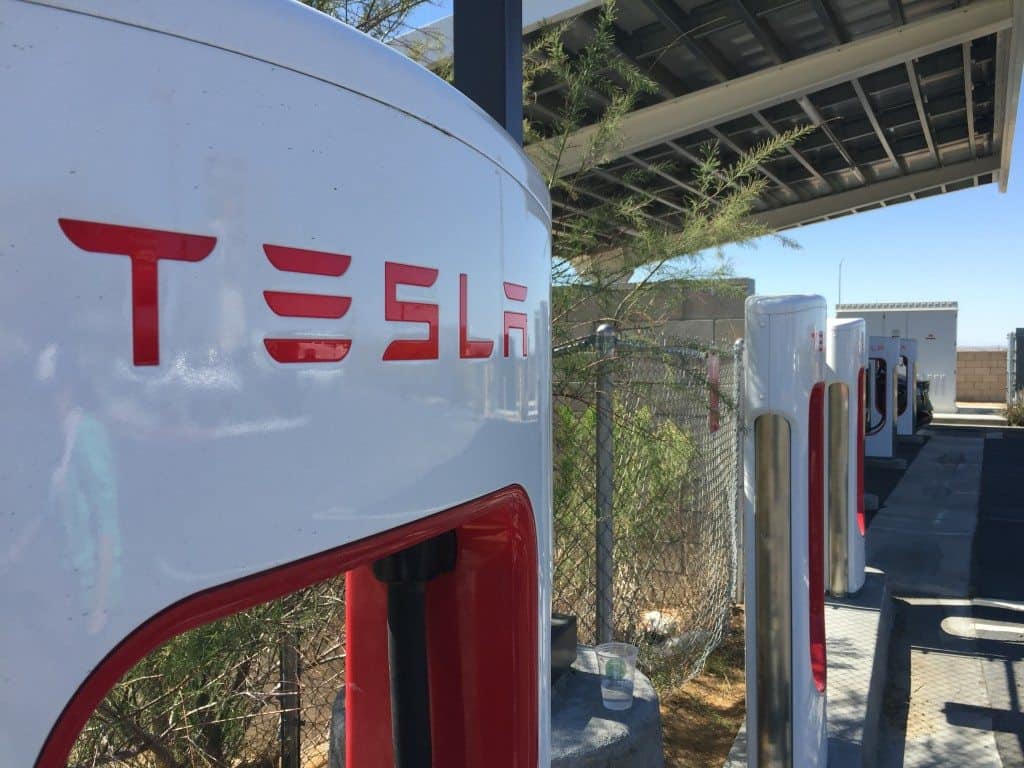Tesla Motors Inc Model S owner and French entrepreneur, Loic Le Meur, reached out to Elon Musk via Twitter to make his thoughts know about Supercharger abuse. Le Meur told Musk that abuse is taking place at the popular San Mateo Supercharger station in Silicon Valley that has apparently become the parking place for an increasing number of Tesla vehicles. The situation isn’t limited to San Mateo though. If you are traveling through California in a Tesla you need to allow extra time for charging because “idiots” (LeMeur’s word), can monopolize Supercharger spaces.
How can Tesla curtail the Supercharger abuse?
As per Le Meur, the Tesla owners are not using the charging station to charge their cars, but to park their cars. Musk promptly replied back by acknowledging the growing “issue,” and said “Supercharger spots are meant for charging, not parking. Will take action.”
California has more electric vehicles that any other state in the US (7 out of every 1000 vehicles registered). So, it is not surprising that the crowded Supercharger facility in San Mateo is often heavily utilized.
Now, the question is what can Musk do about the increasing problem? The automaker could start with friendly persuasion, says Teslarati. They could ask the Tesla owners to stop parking their cars in the charging station, something similar to the email they sent last year to the Model S owners, who the electric carmaker identified as abusing their Supercharger privileges. In the said email, the automaker said, “We ask that you decrease your local Supercharging and promptly move your Model S once charging is complete.”
You're right, this is becoming an issue. Supercharger spots are meant for charging, not parking. Will take action.
— Elon Musk (@elonmusk) December 11, 2016
For alleviating Supercharger congestion, Electric Jen proposed five strategies in June. The five strategies included valet services, dedicated express chargers with clear time limits, upgrading the Tesla in-car navigation program to update when a vehicle needs charge, publish peak usage times so users could plan their charging times more efficiently and lastly, building more Superchargers.
Supercharger abuse still rampant
Though Tesla Motors Inc is working on some of the suggestions from Electric Jen, it is not helping as it appears. The automaker even implemented a new message text-based alert system earlier this year to deter owners from parking their vehicles at Superchargers after charging them. The electric carmaker would send a text alerting the user that charging is complete, and then text every 5 minutes until the car is unplugged, notes Electrek.
This is not working with everyone as Tesla owners are still complaining that people are leaving their Model X or S after charging is over, sometimes for overnight. As per several owners, taxi services like Tesloop, are leaving their cars overnight at Superchargers in Southern California. The business model of this taxi service is to provide long distance transport services, especially between Las Vegas and Los Angeles, and using Tesla Superchargers to charge their cars for free. It reduces their ongoing costs, and it is technically within the guidelines of Tesla for Superchargers.
On the other hand, taxi services like Teo Taxi, which use Tesla Motors Inc vehicles, have bought their own private Superchargers directly from the automaker to charge their car for short distance travel without causing any problems at public Superchargers.
Trusted & Regulated Stock & CFD Brokers
What we like
- 0% Fees on Stocks
- 5000+ Stocks, ETFs and other Markets
- Accepts Paypal Deposits
Min Deposit
$200
Charge per Trade
Zero Commission on real stocks
64 traders signed up today
Visit Now67% of retail investor accounts lose money when trading CFDs with this provider. You should consider whether you can afford to take the high risk of losing your money.
Available Assets
- Total Number of Stocks & Shares5000+
- US Stocks
- German Stocks
- UK Stocks
- European
- ETF Stocks
- IPO
- Funds
- Bonds
- Options
- Futures
- CFDs
- Crypto
Charge per Trade
- FTSE 100 Zero Commission
- NASDAQ Zero Commission
- DAX Zero Commission
- Facebook Zero Commission
- Alphabet Zero Commission
- Tesla Zero Commission
- Apple Zero Commission
- Microsoft Zero Commission
Deposit Method
- Wire Transfer
- Credit Cards
- Bank Account
- Paypall
- Skrill
- Neteller
What we like
- Sign up today and get $5 free
- Fractals Available
- Paypal Available
Min Deposit
$0
Charge per Trade
$1 to $9 PCM
Visit Now
Investing in financial markets carries risk, you have the potential to lose your total investment.
Available Assets
- Total Number of Shares999
- US Stocks
- German Stocks
- UK Stocks
- European Stocks
- EFTs
- IPOs
- Funds
- Bonds
- Options
- Futures
- CFDs
- Crypto
Charge per Trade
- FTSE 100 $1 - $9 per month
- NASDAQ $1 - $9 per month
- DAX $1 - $9 per month
- Facebook $1 - $9 per month
- Alphabet $1 - $9 per month
- Telsa $1 - $9 per month
- Apple $1 - $9 per month
- Microsoft $1 - $9 per month
Deposit Method
- Wire Transfer
- Credit Cards
- Bank Account



